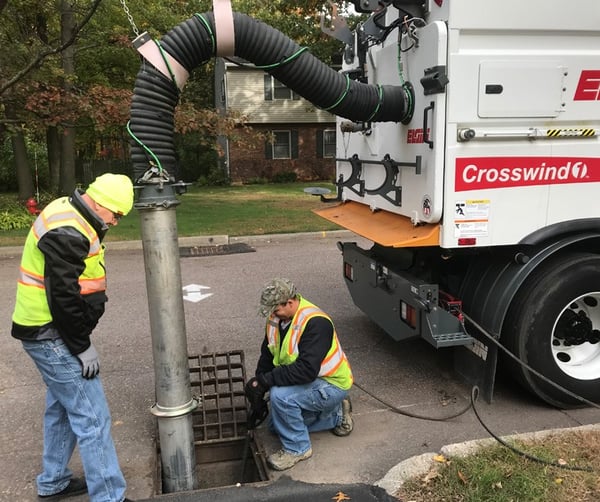Published on April, 03 2023
6 Choices to Consider for your Community
Street Sweeping is a year-round job, but spring is the time for heavy-duty street sweeping. This is especially true in climates where winter includes cold, wet weather and snow. Sand, salt, silt and gravel accumulate to put your street sweeper through an arduous run. That’s why we’re giving you some insider tips on things you might choose to do before tackling spring street sweeping.
- Complete proper checks and cleaning. As highlighted in the post on extending your sweeper’s useful life, it’s critical to do regular checks and maintenance. This is especially true prior to tackling spring build-up on streets across your municipality, so your sweeper is operating at peak performance when you need it the most.
- Prioritize catch basin cleaning. Some places combine street sweeping with catch basin cleaning. As the snow melts and area streams and rivers rise, flooding is a top concern in the spring. This makes catch basin cleaning critical, so streets don’t flood, and rain runoff flows as intended. Regenerative air sweepers and pure vacuum sweepers are go-to's for combination sweeping and catch basin cleaning if equipped with a boom-style hose or catch basin cleaning hose feature that can lift leaves, silt, sand, gravel, and litter out of catch basins.
- Determine the maneuverability and speed. April showers bring… stormwater runoff. In many municipalities, porous surfaces are a best management practice for dealing with this runoff and effectively reducing the amount of untreated water and accompanying pollutants directed into waterways. Both regenerative air sweepers and high-power vacuum sweepers should be utilized to perform routine cleaning and help properly maintain a permeable surface.
- Understand what your street sweeper can handle. Mechanical sweepers often handle the heavy build-up that comes during spring cleanup. Since this buildup is often extremely heavy and compacted, the powerful broom and conveyance of a mechanical sweeper are ideal. However, for catch basin cleaning and porous pavement, regenerative air and pure vacuum sweepers are better choices. These sweepers use air conveyance to lift debris into the hopper, which is more effective for these types of surfaces. When it comes to understanding the best choice for spring cleaning, Elgin has a variety of sweepers.
- Make a plan. Did you know that follow-through increases when a specific plan is in place? As your municipality tackles winter build-up, the streets often need more runs. This can result in more hours for your operators. Set up a specific way of when, where, and how you’re tackling spring sweeping. A detailed plan will help set you up for success.
- Consider the weather’s impact. If your community is receiving more rain, especially heavy rainfall, you’ll want to consider sweeping after those events. This is especially true at the bottom of hills where debris can accumulate on storm drains and interfere with drainage. In the previous step, you made a plan. This step is for reminding you to be flexible. You can’t control the weather, but you can control how you handle it.With the right fleet of street sweepers, street cleaning in your area will be a productive practice that leaves streets looking clean and prevents pollution in runoff.With an established dealer network that provides dependable sweepers across the globe, Elgin has the sweeper that best fits your spring cleaning needs. Fill out this form for more information.

